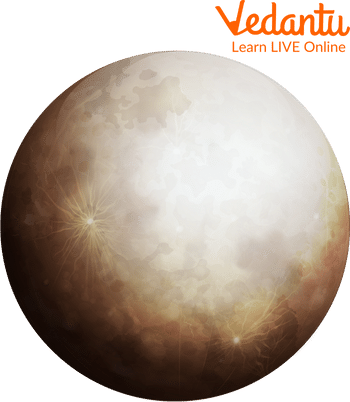




About Planet Mercury
Mercury is the smallest planet in the solar system now that Pluto has been declassified. Mercury has an iron core and a rocky surface. Compared to other rocky planets, like Earth and Mars, Mercury's iron core is enormous. As a result, Mercury has an extremely high mass relative to its size.
The craters on Mercury's barren surface are the result of asteroids and other things striking the planet. It resembles the moon of Earth a lot. Mercury rotates relatively slowly relative to the Sun and has almost little atmosphere. On Mercury, a single day is equivalent to almost 60 days on Earth. Mercury has some spectacular temperature swings because of its long day and thin atmosphere. These are some mercury facts for kids.

Solar System
Interesting Fact about Mercury
Here are some the interesting fact about mercury:
Caloris Basin is the name of a large crater on Mercury. This crater was created by a massive impact that created hills on the opposite side of the globe.
Mercury is an element that bears the planet's name. At one time, alchemists believed they could turn mercury into gold.
The Roman god Mercury inspired the planet's naming. As well as being the god of travellers and traders, Mercury served as a messenger to the gods.
More quickly than any other planet, Mercury orbits the Sun.
Astronomers in ancient Greece believed it to be two planets. They gave the one they observed at dawn the name Apollo and the one they observed at dusk the name Hermes.
Of all the planets, it has the least circular (orbitally) eccentric orbit.
These are some of the planet's mercury facts.
How Do We Know about Mercury?
There is proof that cultures like the Sumerians and Babylonians knew about the planet Mercury as early as 3000 BC. Early in the 1600s, Galileo used a telescope for the first time to see Mercury. Since then, many astronomers have contributed to our understanding of the planet.
Sending a spacecraft to investigate Mercury is highly challenging because the planet is so near to the Sun. The spacecraft is constantly being pulled downward by the gravity of the Sun, which means that stopping or slowing down at Mercury requires a lot of fuel. Mercury has already received two space probes.
In 1975, Mariner 10 became the first. Mariner 10 revealed Mercury's magnetic field and provided the first up-close images of the planet. MESSENGER was the following spacecraft. Between 2011 and 2015, MESSENGER orbited Mercury before it was destroyed on April 30, 2015. As Mercury lies inside the Earth's orbit, it is challenging to study from Earth.
As a result, whenever you attempt to see Mercury, you are also seeing the Sun. Mercury is almost completely hard to view due to the Sun's strong light. Because of this, Mercury is best observed soon after or just before the sun sets.

Planet Mercury
Summary
Mercury is not the hottest planet, despite being the one nearest to the Sun. It is the smallest planet in the Solar System, lacks seasons, has a thin atmosphere, is the most cratered planet, and experiences extreme temperature changes between day and night. Mercury doesn't have a moon, and because of its proximity to the Sun, it never will. It would take 18 Mercurys to be the same size as Earth because Mercury is roughly twice as big as Pluto. NASA's Mariner 10 was the first spacecraft to investigate Mercury; this took place in 1974. The Sun would appear three times as large in the sky from Mercury than it does from Earth.
FAQs on Mercury Facts for Kids
1. What makes the planet Mercury special in our solar system?
Mercury is special for several reasons. It is the smallest planet in our solar system and the one closest to the Sun. Because it's so close to the Sun, it travels around it faster than any other planet, making its year the shortest at just 88 Earth days. It also has the most extreme temperature swings, from scorching hot to freezing cold.
2. How is Mercury different from our planet, Earth?
Mercury and Earth are very different. Here are the main comparisons:
- Size: Earth is much larger than Mercury. Mercury is only slightly larger than Earth's Moon.
- Atmosphere: Earth has a thick, breathable atmosphere that protects us. Mercury has almost no atmosphere, which is why it can't trap heat.
- Day and Year: A year on Mercury is very short (88 Earth days), but a day is very long (about 59 Earth days).
- Moons: Earth has one moon, while Mercury has zero moons.
3. Why is Mercury so hot during the day but freezing cold at night?
This happens because Mercury has almost no atmosphere. An atmosphere acts like a blanket, trapping the Sun's heat and spreading it around. During its long day, the side of Mercury facing the Sun gets incredibly hot, up to 430°C. But without an atmosphere to hold that heat, it all escapes into space during the long night, causing temperatures to drop as low as -180°C.
4. What is the planet Mercury made of?
Mercury is a rocky planet, similar to Earth. It has a solid, cratered surface covered in a layer of dust. Scientists believe it has a very large and dense iron core, which makes up about 75% of the planet's diameter. The outer layer, or crust, is made of rock and silicate materials.
5. How long is one day and one year on Mercury?
A year on Mercury is much shorter than on Earth, while a day is much longer.
- A year on Mercury (the time it takes to orbit the Sun) is only 88 Earth days.
- A day on Mercury (the time it takes to spin once on its axis) is about 59 Earth days.
6. Why doesn't Mercury have any moons?
Mercury does not have any moons mainly because of its proximity to the Sun. The Sun has a very strong gravitational pull, which would likely capture or pull away any object that tried to orbit Mercury. Being a small planet, Mercury's own gravity is not strong enough to hold onto a moon against the Sun's powerful influence.
7. Is the planet Mercury related to the liquid mercury used in thermometers?
No, they are completely different things that just share a name. The planet Mercury is a massive ball of rock and metal in our solar system. The element mercury is a shiny, silver-coloured liquid metal (chemical symbol Hg) found on Earth. The planet was named after the swift Roman messenger god, Mercury, because of how fast it moves across the sky.
8. Could a person walk on the surface of Mercury?
While Mercury has a solid, rocky surface you could technically walk on, it would be impossible for a human to survive there. You would need a very advanced spacesuit to protect you from the extreme temperatures (either boiling hot or freezing cold) and the lack of a breathable atmosphere. You would also be exposed to intense solar radiation from the nearby Sun.









